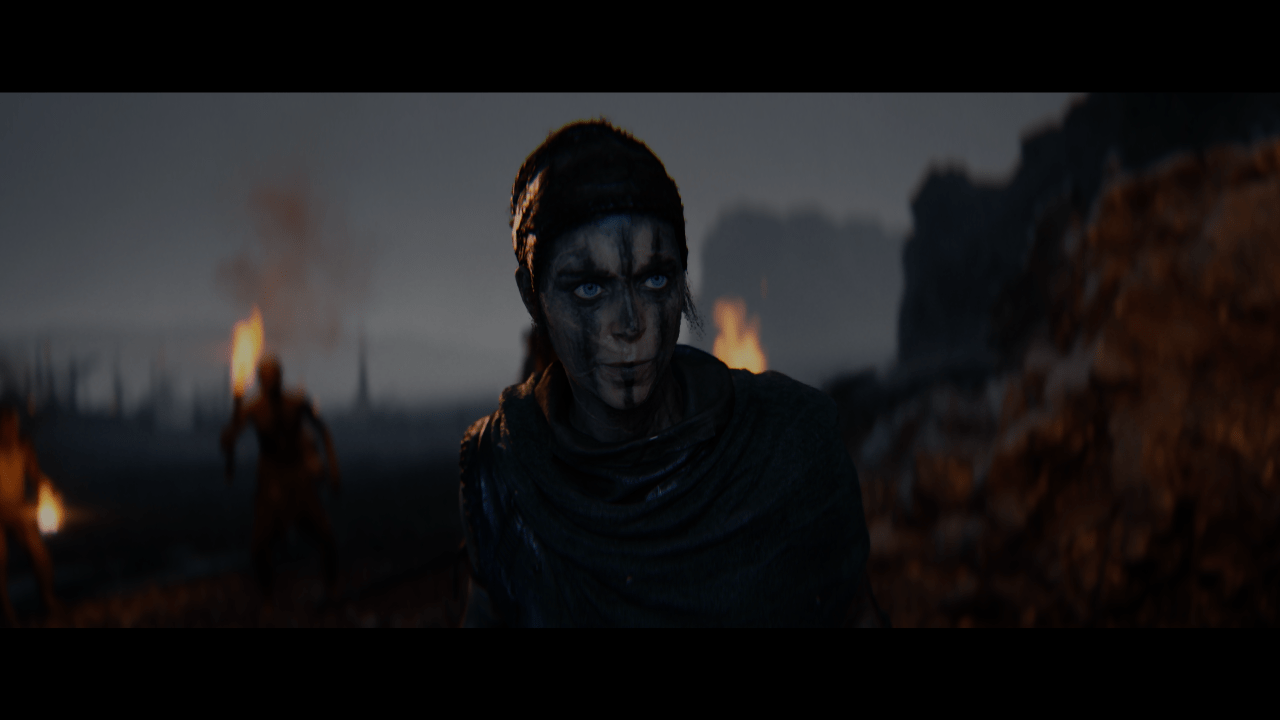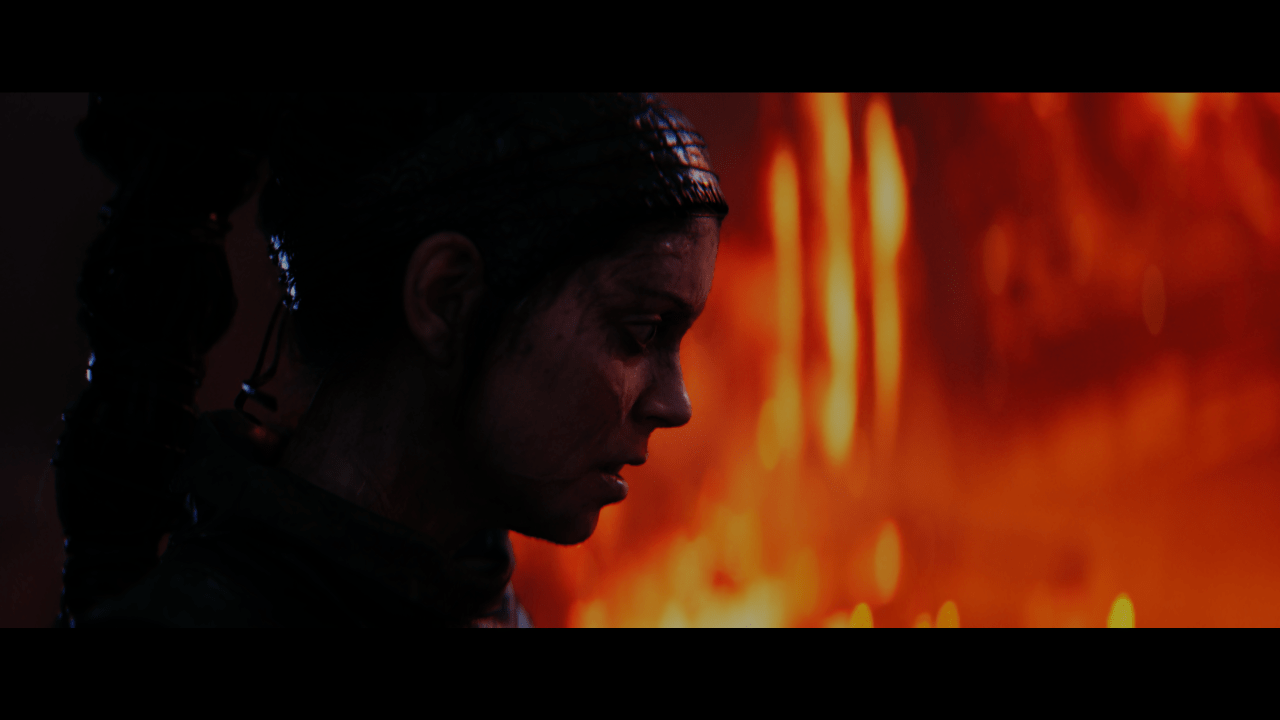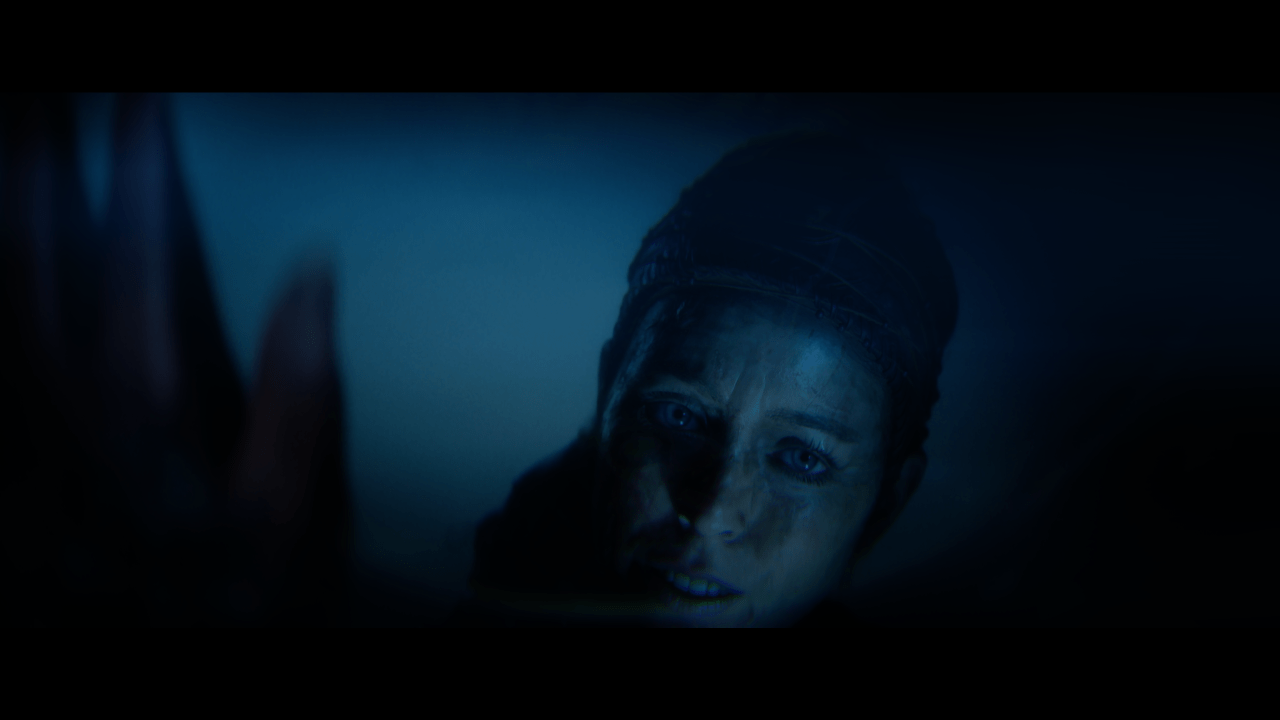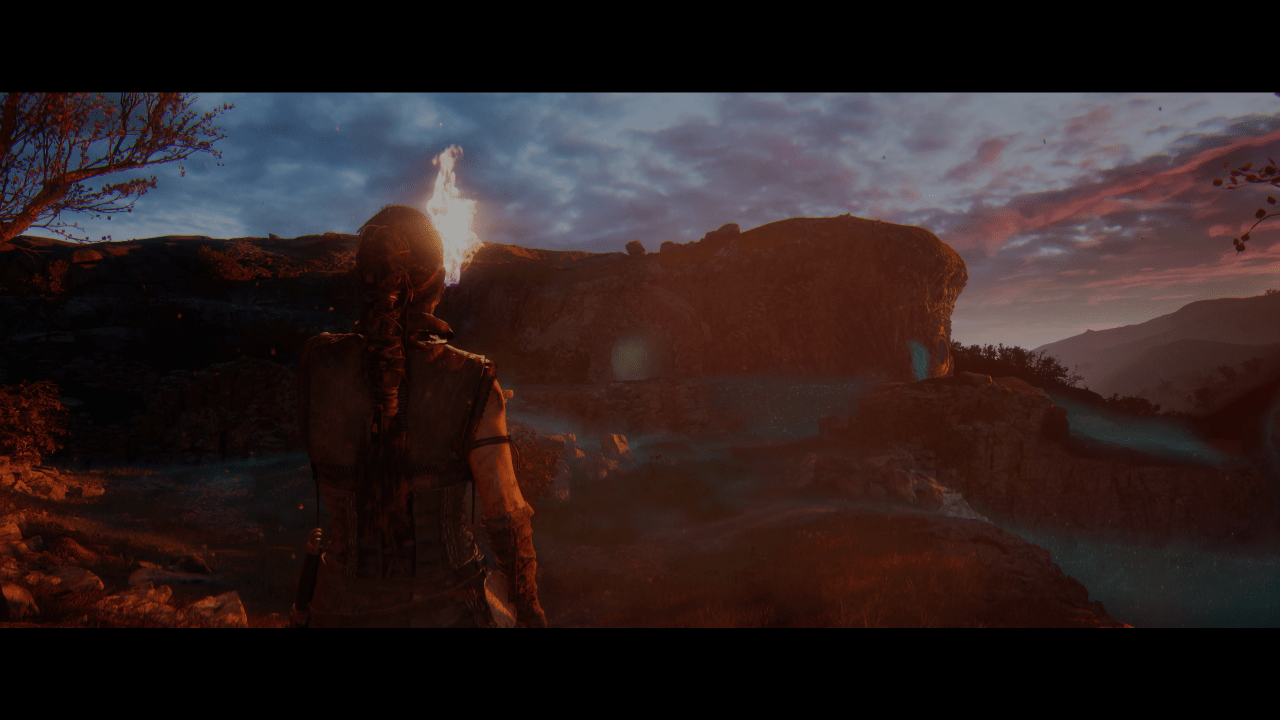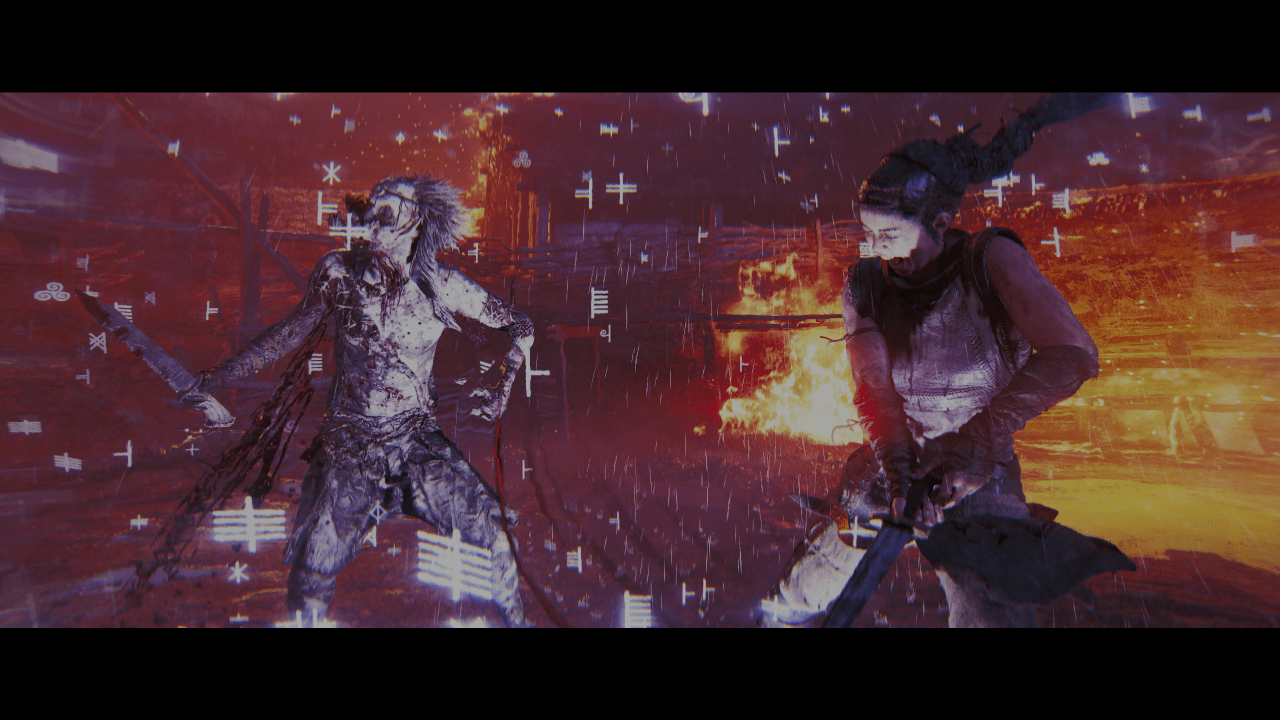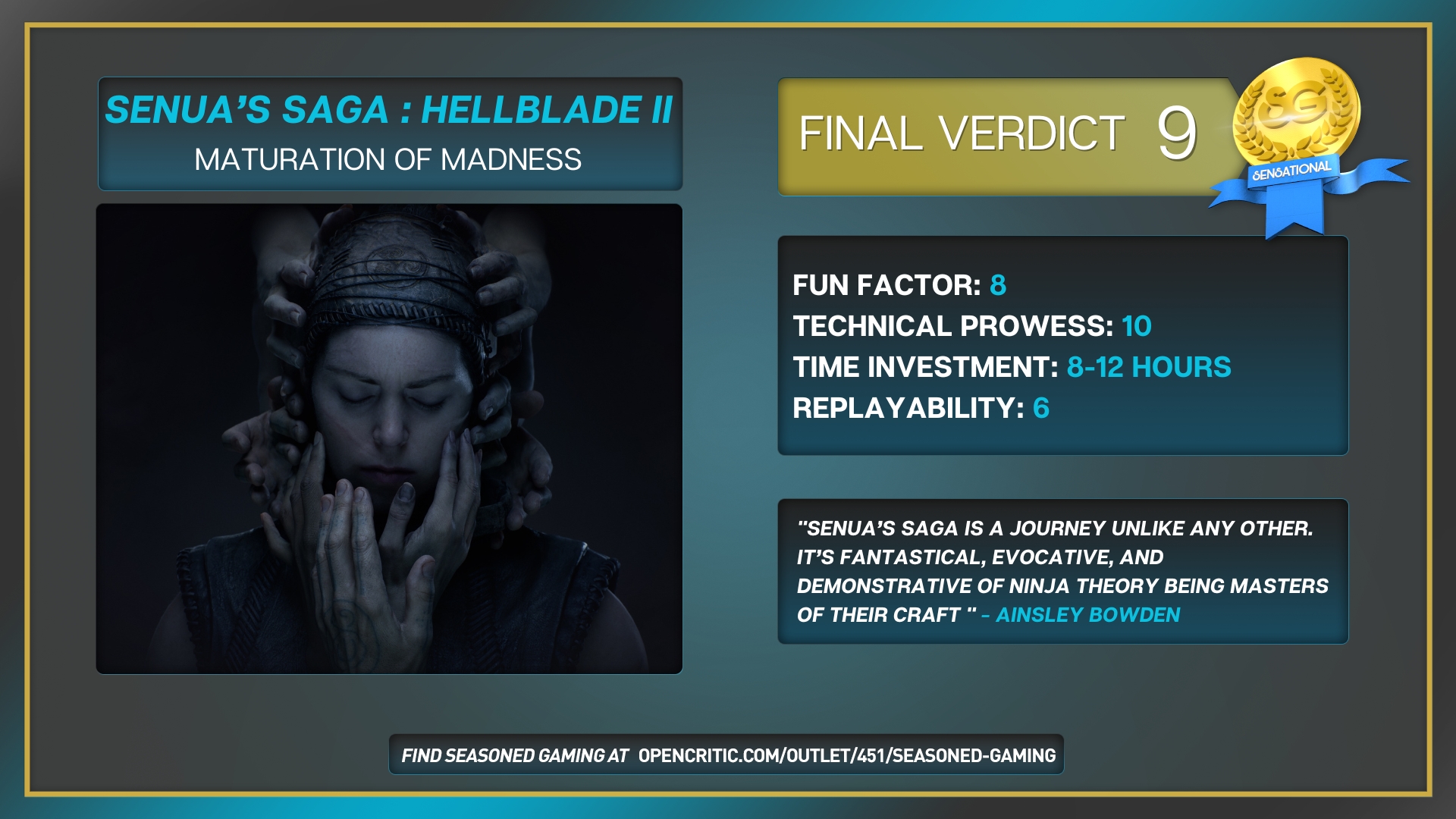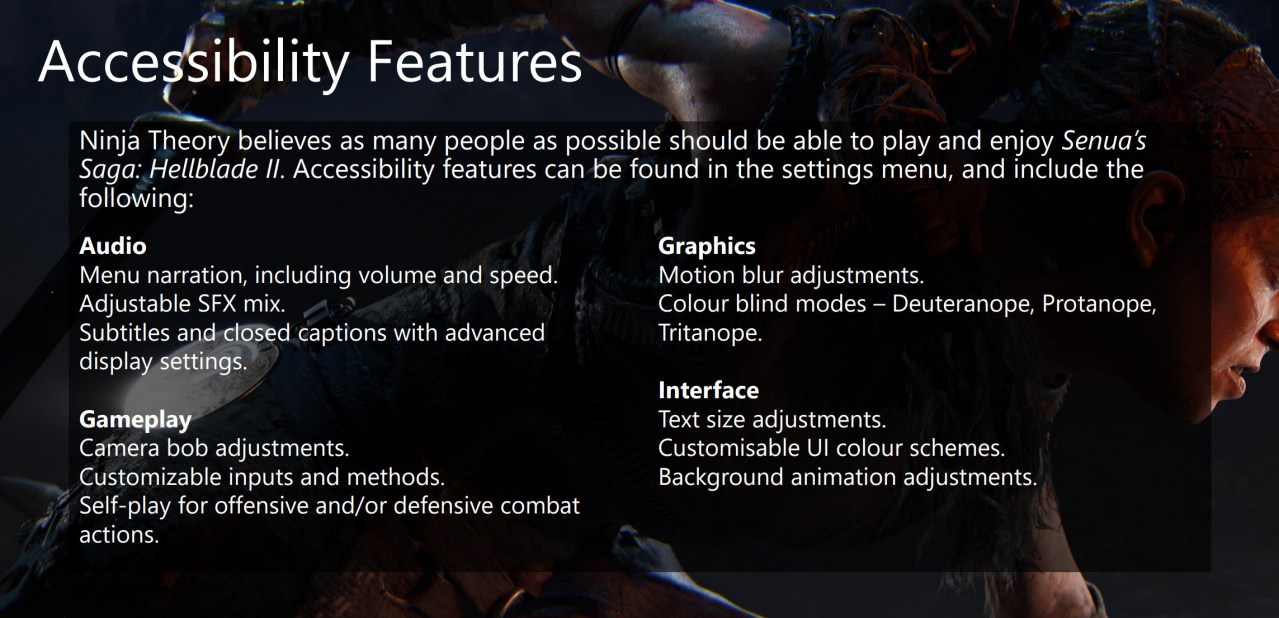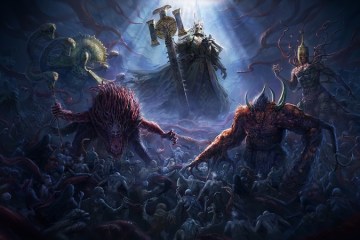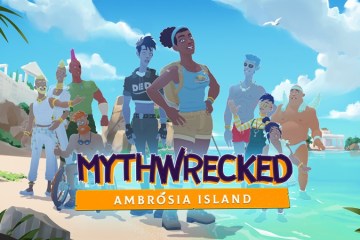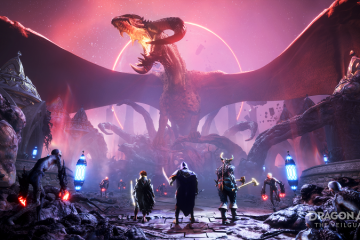As I sat motionless, mouth gaped in awe at what was unfolding on-screen, it became readily apparent that Ninja Theory had crafted something truly special. It’s been nearly seven years since Ninja Theory released Hellbade: Senua’s Sacrifice, yet it’s still unique in its presentation and its representation of the impacts of psychosis: an aspect that Ninja Theory continues to be vocal and supportive of. With Senua’s Saga: Hellblade 2, they haven’t attempted to re-create the experience. Instead, they focused on refinement and, more importantly, the maturation of Senua and her impact on others.
So, does it work? Yes. Yes it does. And it results in one of the most memorable experiences I’ve had with a game in some time.
Blurring the Lines of Reality
Set in 10th century Iceland, Senua’s Saga opens with Senua having allowed herself to be captured by those tormenting her people with hopes of revenge. Immediately upon reaching the shore and taking control of Senua, I was astounded. The environmental detail on display is instantly striking. Right off the bat, I will say: this is Unreal Engine 5’s coming out party.
From the first sequence until the closing credits, I was constantly amazed at what I was witnessing on-screen. The team at Ninja Theory went to great lengths to capture the real look and feel of Iceland, and they succeeded beyond measure. Aiding in that presentation is a similar approach to the original Hellblade in that there is no U.I. to have to engage with. There are no prompts, no menus to frequently sift through, no tutorials, nor any reminders or pop-ups. Furthermore, the entire experience is presented in letterbox aspect ratio to maintain the cinematic feel throughout.
It is, quite frankly, spectacular. The environments look, sound, and even feel real, with a slight grittiness to the filtering that enhances the overall presentation. Moments like crawling through a pitch-black cave, watching the reflections of my torch flicker across the stone while lit embers fall into the shimmering puddles beneath my feet are breathtaking. Merely a few years ago, sequences in Senua’s Saga would have amazed audiences purely as tech demos.
These aspects are further heightened by the character performances on-screen. Every movement in the game was reportedly crafted with motion-capture utilizing Ninja Theory’s new studio, and it shows. As with the environments, the characters look and feel real and display the most-impressive facial detail and animations I’ve ever witnessed in a game. As with the original, Senua actress Melina Juergens steals the show with a striking performance and wide range of expressions and emotions over the course of her journey. And yes, you can capture to your heart’s content with a highly-detailed photo mode.
Perhaps most notably, despite all of this, playing feels intuitive immediately. Without thinking about it, I was instantly engrossed as I set out on the hunt for my captors with no thought as to where I had to go or what I had to press.
While the visual fidelity on display is superb, it’s the audio design that players often remember most about Hellblade, and that will be no different with Senua’s Saga. Once again playing as Senua, you are tormented throughout as the voices in your head will challenge and degrade you as you wrestle with reality. In this case, the mastery of audio design is further elevated by David Diaz and his team to match the astonishing visuals.
Not only is the mixing of the psychosis exceptional, but there’s dynamic design at play as well that adjusts to the current situation. It’s incredibly impressive. Playing Senua’s Saga with spatial audio headphones is an unforgettable experience, and it’s one that I cannot recommend enough.
Because of Senua’s psychosis, soundtrack design becomes even more important as it would be easy for either the music or the psychosis to audibly conflict or overpower the other. Fortunately, this is not the case as, while more subtle, the accompanying track selection is both beautiful and moving. In particular, there was one action-orientated sequence mixed with overlaying audio that was so stunning, I put my controller down momentarily and audibly said “wow.”
No Pressure, No Diamonds
While the original Hellblade builds its way to darkness with increasing intensity, Senua’s Saga begins in it. Prior to the initial title screen, you are primed with a warning specifically stating that the game “includes realistic depictions of graphic violence, trauma, death, terror, burning, drowning, confined spaces, and themes of child loss.”
It wastes absolutely no time in pushing Senua to her limits, with the first couple of hours containing a wealth of extraordinary, dramatic sequences. And there are scenes throughout that can be very stark and direct in their presentation. Whereas Senua’s Sacrifice was a journey focusing on Senua herself, Saga is a story of growth.
Over the course of your travels across Iceland, you’ll meet a few unlikely companions, and it’s how Senua’s story intersects with theirs that’s most notable. While the events that unfold are fantastical and stunning to witness on-screen, their allegorical nature is what is most poignant. And, depending on your personal experiences, they could leave a lasting impression. It’s this evolution that builds upon the foundation of Senua’s Sacrifice, and it’s that which I appreciate most when taken on the whole.
The tale that Senua’s Saga weaves and the intimate narrative it delivers is engrossing, captivating, and one I will remember for a long time. It’s intense at times, with moments of respite and calm suddenly interrupted by terror. But it keeps a rather steady pace, with only a section or two feeling as though they slightly overstay their welcome. Similar to binging a great show, I didn’t want to put it down, and I initially finished it in just one day. While the climax didn’t quite have the level of impact that the original did on me, the overall themes in Hellblade 2 are more grand, thought-provoking, and well-constructed.
Careful Refinement
Criticisms often levied at Senua’s Sacrifice were related to combat and puzzle-solving, two areas where the refinement of Senua’s Saga is most prevalent. Symbol puzzles within the environment return but are more limited than in the original. They are accompanied with a few different environmental puzzle types, none of which are particularly challenging. Often times, it can feel as though the puzzles are merely an unnecessary hindrance to progression, and that, sadly, is still the case here. Though I feel they are less egregious than in the original, I still have to imagine those interactions could be improved.
Outside of environmental puzzles, hidden throughout the environment are a couple of types of lore collectibles. For those interested in further diving into the mythology of the period and culture, they are enjoyable to discover and not far off the beaten path. It’s also worth noting that after initially beating the game, you unlock the ability to play with narrators enabled should you want to further deepen your experience.
The combat scenarios have seen a wealth of improvement and, in-fact, are some of the most cinematic sequences you’ll engage with. Battles have been adjusted to focus entirely on one-on-one fights which rely on timing, dodging, and parrying. However, they now tie more directly into specific intervals within the story and generally have more logical placement throughout.
They are also another area where the brilliant motion capture is up front and on display. Many of the combat scenarios are in a group setting which allows the choreography to more resemble action scenes out of a blockbuster movie rather than the monotonous fights in the original. Combat feels weighted in reality and brutal, with death blows being particularly vicious given the setting. While I would have preferred some additional depth, I also believe the system fits the design of the game appropriately as it doesn’t require any additional complexity nor detract from the immersion.
Growth Through Pain
I comment regularly about some games having heart. It’s often a difficult-to-describe trait within games as, by their very nature, they can be experienced in drastically different ways from one person to the next. That said, Senua’s Saga is memorable for what it presents. Within the fables it weaves are parallels to all of us and the decisions we make that often have far longer lasting and reaching effects than anticipated.
Dom Matthews, the Studio Head at Ninja Theory, commented about wanting to make it easy for players to suspend their belief, which would then allow them to be fully immersed. And, in doing so, Ninja Theory could take you on a journey that would “leave you thinking and feeling.” Senua’s Saga is a journey unlike any other. It’s fantastical, evocative, and demonstrative of Ninja Theory being masters of their craft.
Mission accomplished, Dom.
Thank you to Xbox for providing a code for review! You can find Seasoned Gaming’s review policy here.
Accessibility and Technical Notes
I want to ensure I comment on a few other aspects of Hellblade 2 that may apply to players. First, with regard to accessibility, here are the features that are listed by Ninja Theory. While I can’t personally speak to the overall competency of the features, the ability to have the game “self-play” for offensive and/or defensive combat actions is notable.
With regard to performance, I primarily played (and captured) from my PC where I was playing at max settings using DLSS. On PC, the game supports a wealth of options relating to performance, including TSR, XeSS, DLSS, and FSR implementation. On the Series X, I was impressed with the quality of the visuals, even when compared to max settings on PC (though obviously a little muddier). Framerate, however, is capped at 30fps. I’m hoping that, in the future, Ninja Theory can enable FSR to aid with a 60fps option.The Series S, meanwhile, is obviously a lower display resolution than the Series X. Playing at 1080p, the game is still beautiful due to the way it was captured. But the drop in texture quality is more noticeable, naturally.
Fortunately, at no time did I experience any technical issues. I never experienced a single crash or hiccup throughout. It was entirely flawless.

